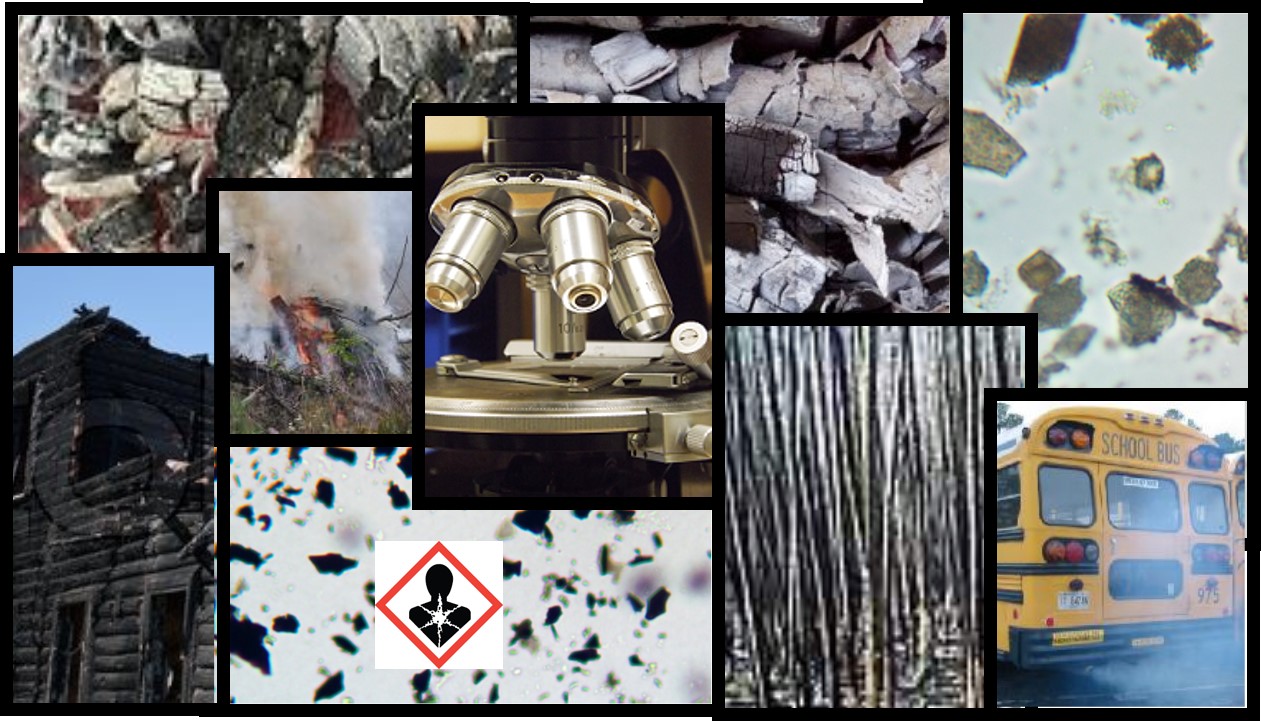Soot, Ash & Char
Soot, ash & char are byproducts of incomplete combustion produced from the burning of organic matter. They are most easily recognizable as fine powdery dust, embers, debris and blackened, destroyed materials which constitute the spent remains after fire. But soot also appears as dark discoloration on aging buildings, an exhaust plume especially from diesel powered vehicles and as gunk deposited internally in engines. Soot is frequently referred to as carbon black because of the colour, but this is incorrect; carbon black is a distinct material that is commercially produced under highly controlled conditions and is used extensively as an ingredient in making rubber, plastics, coatings and pigments.
Burning in this sense can mean the use of fossil fuels for energy like natural gas heating, wood fireplaces, gasoline and diesel powered vehicles and also means incineration of vegetation by wild fires, agricultural clearing of bush, destruction of household wastes and rubbish , etc. Soot consists of varying amounts of carbon and organic compounds, whereas ash is mainly inorganic. Char is often associated with remnants of burnt wood and damaged building materials.
Testing of discolouration , soiling and/or damage to exposed surfaces, building materials, fabrics and consumer products may be necessary to evaluate contamination after a fire, to determine the origins which may by soot, mold or other substances, to demonstrate the effectiveness of restoration and cleaning, for investigating arson and forensics, for resolving insurance claims, etc. We offer several different methods of testing for soot residuals using filters, wipes, tape, and by vacuum techniques. The right approach is required to properly evaluate the situation. For advice on sampling, for obtaining the supplies and for analysis contact our laboratory.
Microscopic analysis of soot, ash and char is based on ASTM Method D6602 and allows for rapid screening of contamination. More advanced analysis techniques can also be applied to intimately study the particles, if necessary. Contact us to discuss. We would be pleased to assist.
Source: OSHTECH Inc. 2016

